- Deck name: MAGICMAKERS TAROT
- Author/Artist: Paulina Fae
- Publisher: US Games Systems, Inc. www.usgamesinc.com
- Publication Date: July, 2025
- RRP: US$23.95; GB£28.00
- ISBN: 978-1-64671-244-1
- Reviewed by: MadeInChrome
The MAGICMAKERS TAROT is the fifth delightful tarot deck from Canadian artist Paulina Fae. Illustrated in her signature, ethereal, line drawn style, using a muted pastel palette, Fae welcomes us (back – if you have any of her previous decks) to her whimsical, carnivalesque world, populated with her chimerical creatures and sylph-like fairy folk.
Each card is intricately detailed, as there is, as always with Fae’s work, much to explore and take in. Also of note is that there is little that differentiates the suits from each other – not a problem per se, but without the card titles, reading the cards can be a real intuitive effort. There is also a fluidity of symbolism across the deck that may confuse the reader – for instance the crescent moon features as a motif in several cards not just the High Priestess and the Moon. All of which is to say that as systems go, I would leave the RWS as a reference at the door, but – er – keep that door open.
So, here are some notable reinterpretations, if not outright deviations.
Of the Majors, The Magician wears the tri-lunar crown typically of the High Priestess, who in her turn now wears a jagged headdress with her 3 moons dangling as pendants around her neck.
Then there’s the long-legged, supermodel-like Empress, seated wide-eyed with a lemniscate on her belly, a more obvious placement for the symbol, representing the never-ending flow of birth, life, death and rebirth.
The Hierophant has lost his religiosity and institutional connotations, and is now the eccentrically-helmeted Mentor. I got the sense of the hermit-like wise man in the wood who is actually far wiser than he is given credit for.
Then the Lovers, shortened to Love with 2 birds flying towards each other bearing messages in their beaks, focusing more on the nature of kindred spirits than the traditional meaning of choice.
The Chariot card, strangely and yet appropriately, does not feature one but instead 2 winged leopards seemingly let loose in opposing directions.
The Wheel of Life is an interesting take, with Lady Fortune cradled in a flower, while loosely tethered to a Wheel that seems in danger of floating away, as the world, all topsy-turvy, flows and fluxes around her.
The Devil has been renamed The Djinn, a genie out of the bottle, losing the oppression of the traditional Arcanum 15 in favour of a theme of rescue; though be careful of the potential trap of the proverbial 3 wishes – only 3 and no more, so wish wisely.
With The Tower, the perspective shifts. The destructive, fire breathing dragon takes centre stage while a steeple, all that is visible of the Tower, is relegated to the lower corner of the card as if no longer of consequence.
And then there’s the unicorn in The World card, suggesting a certain unattainability, as the magical horse is known in lore as being untameable, but also as a symbol of, and so a message of a return to, purity and innocence, or the achievement of something rare and unique.
The Minors also have some standout cards:
Here from the Wands are the carnivalesque, slender dancer in the Ace, the two-hander back to back tug of war in the 5, and the confident gryphon in rampant posture in the 7.
From the Cups, the Ace resembles the traditional RWS 3 of Cups with the 3 Graces – though the booklet’s entry doesn’t elucidate beyond the standard meaning other than to refer to these 3 figures as galactic beings. Then there’s the actual bodily loss in the 5 of Cups, the multiple pathways open in the 7 – reminding me of a rabbit caught in headlights, and a truly luxurious 9 of Cups.
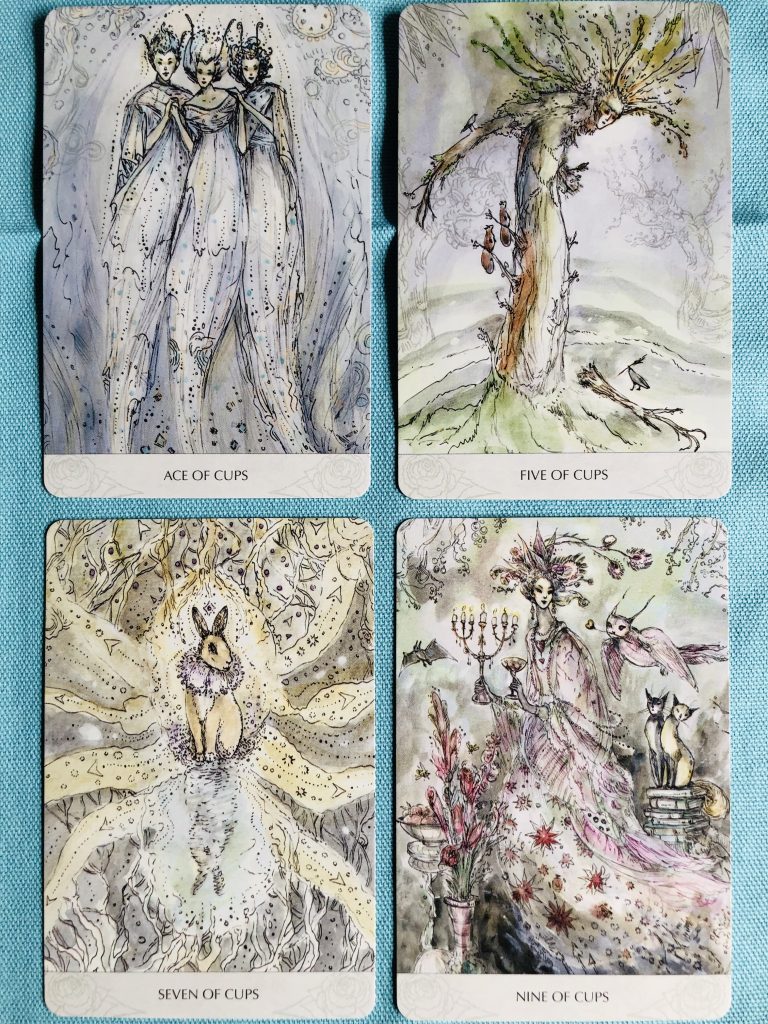
In the Swords, the 8 is a card of true immobility and gives new meaning to being tied up in knots. Also, note the devious looks on the faces of the Page and Knight of Swords, and my personal favourite, the King of Swords, unusually in profile but ever wily and watchful.
Finally, from the Pentacles, the 2 – a real feat of acrobatics well suited to the carnival atmosphere, and the 5 of Pentacles – here having more to say about love than either the 2 of Cups or the Love (Lovers) card, emphasising “in sickness and in health”, and “you and me against the World.”
The MagicMakers Tarot is a charming deck, and I already have the Paulina and the Joie de Vivre Tarots which I use regularly – but they do ask for a bit of immersion in order to connect with them.
As for a reading, I asked of it: What kind of help can you offer? To which the deck replied:
Two of Pentacles (R), Knight of Cups (R), and the King of Pentacles (U).
The booklet’s meaning for the 2 of Pentacles is help with a “lack of balance, financial issues, over-commitment[s], chaos [and] disorganisation.” I chuckled at this considering the chaotic detail of the cards. For the Knight, help with feelings of “betrayal, stagnation, manipulation, selfishness [and] moodiness”; and for the King, “commit[ting] to your goals [and recognising] you have the power to manifest what you desire.” All of which returns to the message in the booklet’s introduction of “secrets prescriptions for personal alchemy” – to find the gold in one’s life, to cure the body of dis-ease, and to promote stability.
Regarding the production values, the cards and booklet come in a sturdy 2-piece 8.5 cm x 12.5 cm box. The borderless cards, measuring 7.5 cm x 11.5 cm, are the standard US Games card stock which is good, with a springy thickness and a smooth waxy finish for efficient shuffling, riffle and overhand. The backs are reversible little squiggles on a lilac background, fairly nondescript in comparison to the images themselves.
Oh, and I LOVE that new card smell! But that’s just me.
The booklet is 83 pages and contains upright and reverse keywords, a little summary of the story of each card image, a message, and a few starter spreads. I did have a quibble about how the keywords are of the RWS but don’t necessarily match the images.
Recommended for those who like a bit of a challenge, and, of course, for all those who love Paulina Fae’s delicately detailed enchantments. More for seasoned readers than beginners, but who will nevertheless find plenty to explore and appreciate with perseverance.
Paulina Fae (aka Cassidy) has been illustrating for over 30 years. She set up the Restless Moon Gallery in 1999, an online web showcase for her creative talents. In addition to her art, Paulina is a writer and musician, and has released over 12 albums in the dream pop genre. She currently lives in Tennessee.

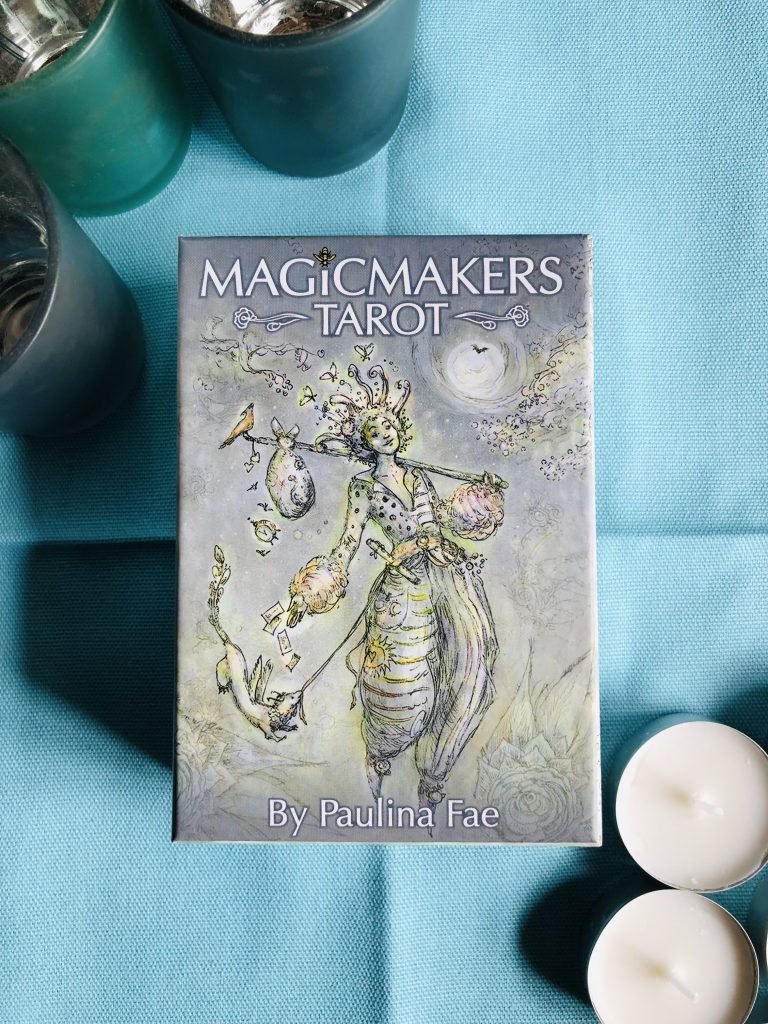
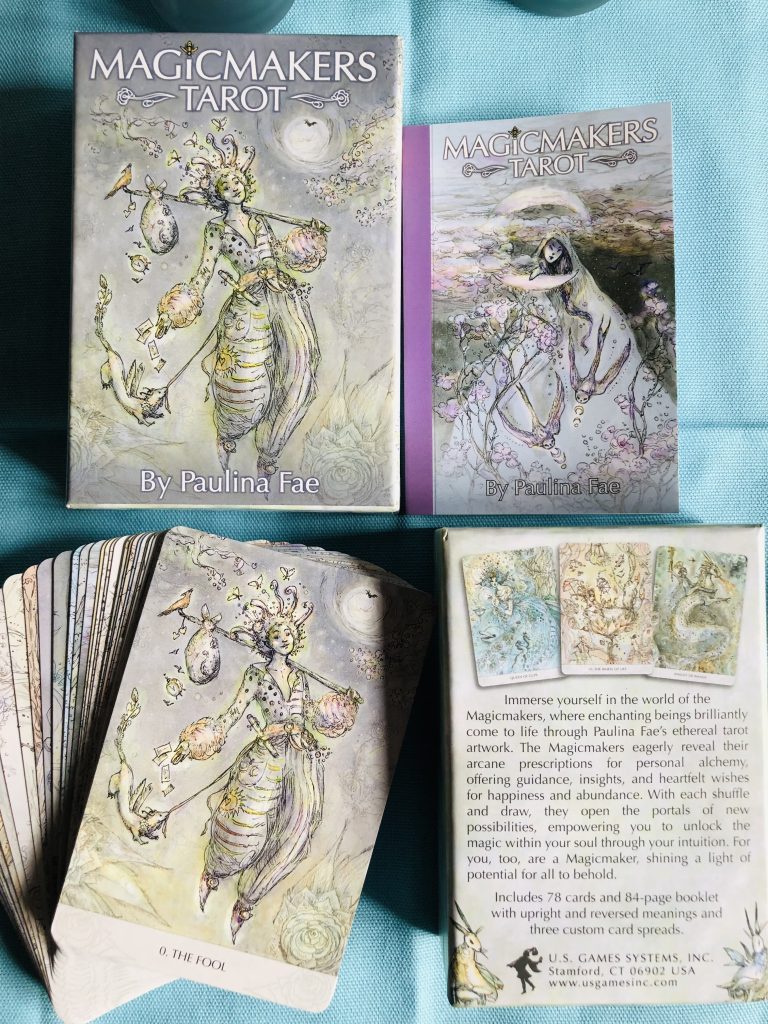
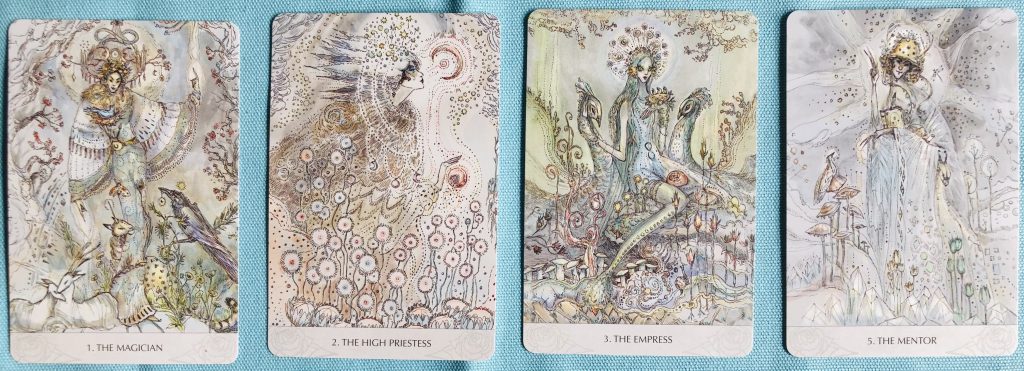
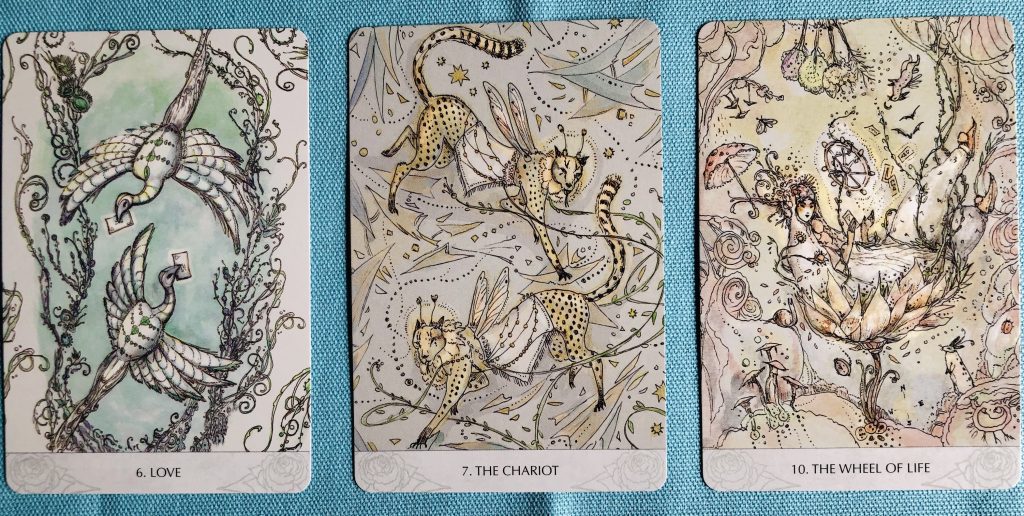
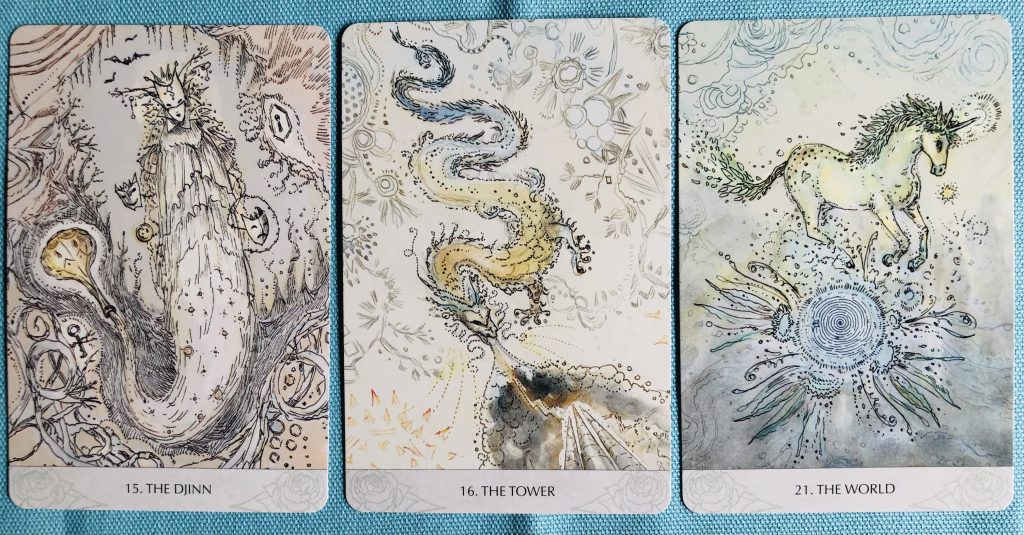
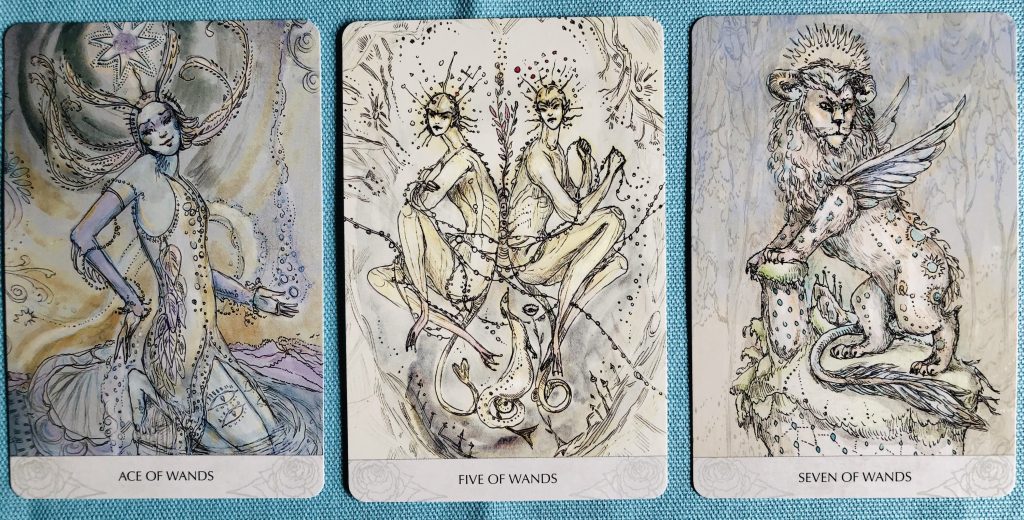
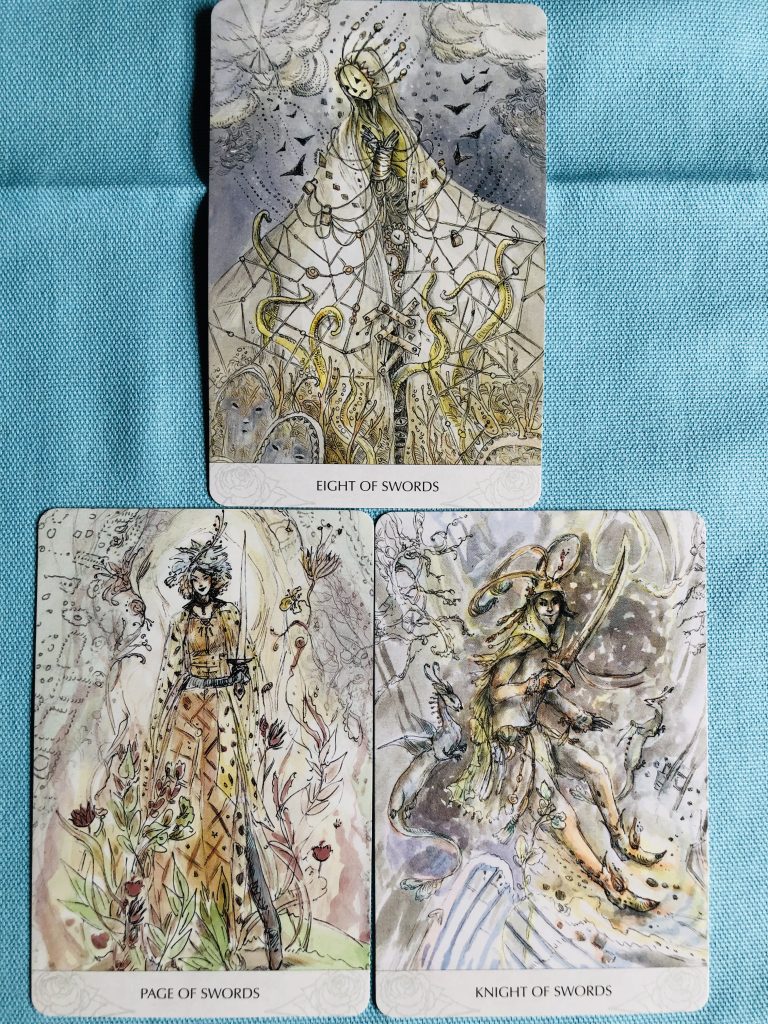
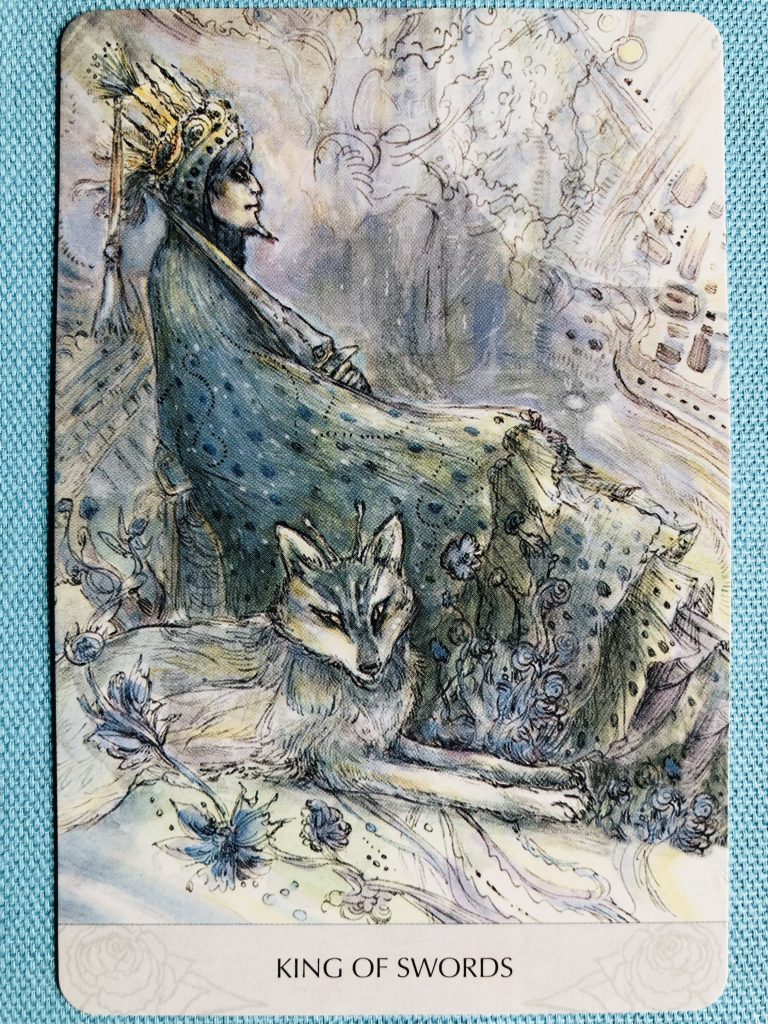
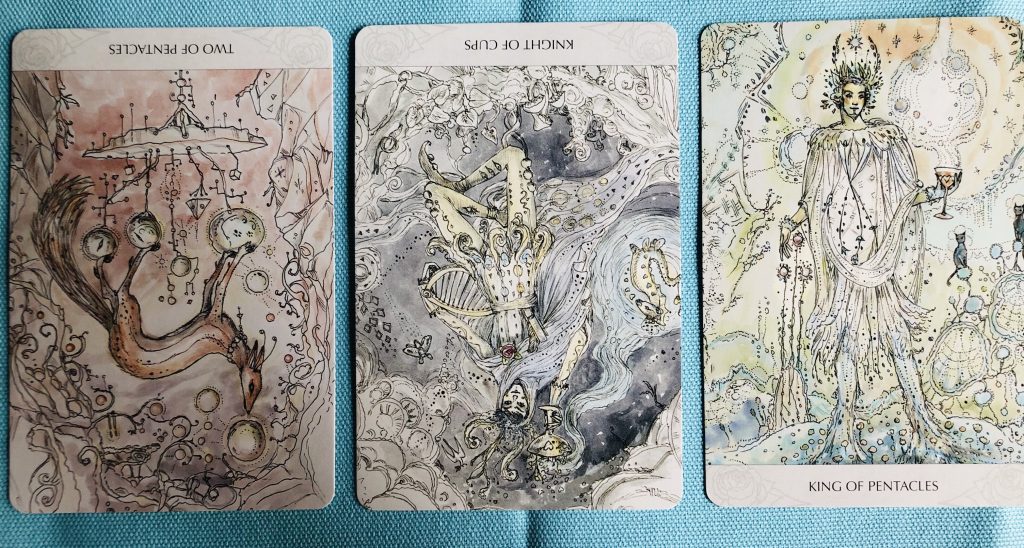
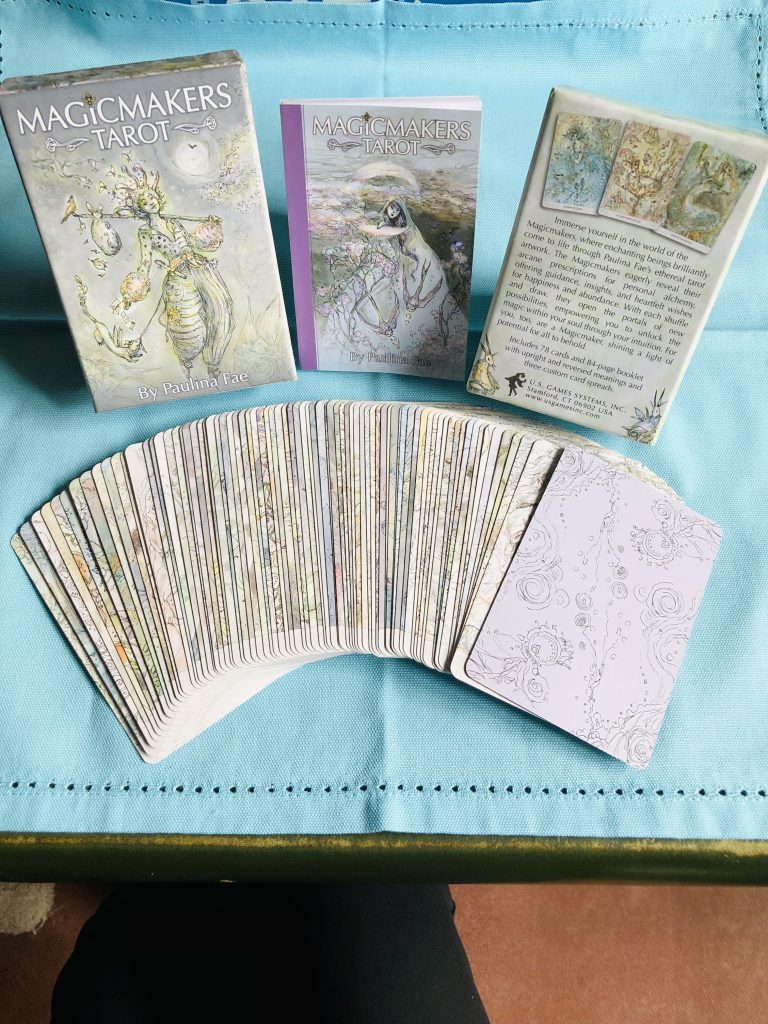
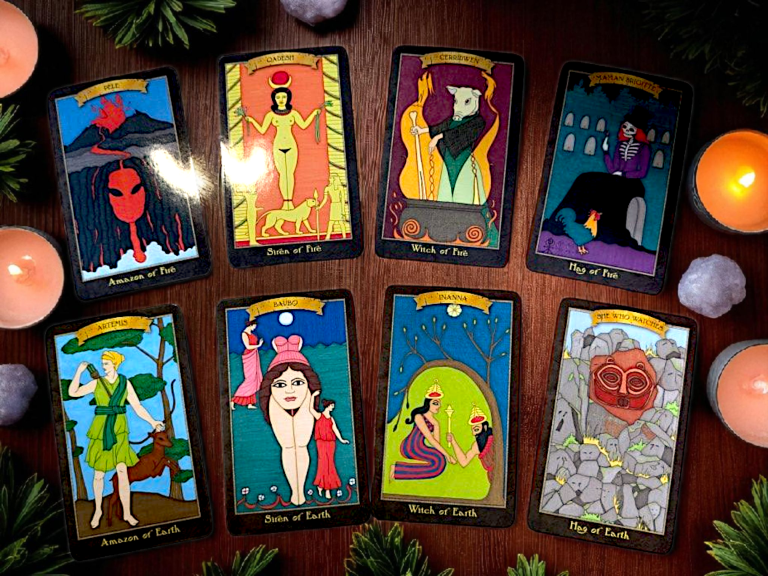



0 Comments